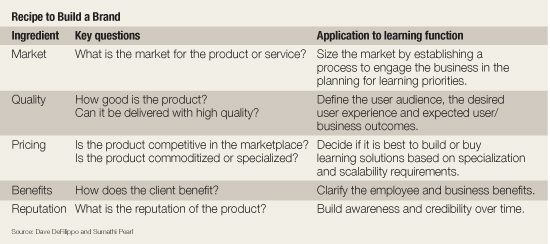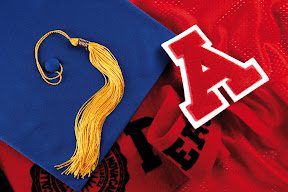Since the 1980s, corporate universities and learning functions have grown steadily in number from about 400, with trendsetters such as GE’s Crotonville and Motorola University, to more than 4,000 worldwide, according to the Corporate University Exchange’s 2011 research report. Learning leaders continue to advance this educational function’s agenda for the sake of organizational performance and capability.
The economic environment during the past few years has increased complexity and demands on organizations, employees and consequently the learning function. On one end of the spectrum, corporate learning functions have responded by becoming more proficient in educating employees. On the other hand, some organizations have focused educational efforts to add value to external stakeholders by training customers and suppliers on products and services.
Whether a company defines internal or external education as a corporate university, learning and development or with some other brand, learning remains an important tool for companies to meet employees’ internal development needs and train business partners on products and services to compete in relative markets and stimulate business growth through partnerships. Corporate universities can be considered a type of people service or organizational product, and as such their branding can be a differentiator in the marketplace and bring competitive advantage.
What’s in a Brand?
As defined by the American Marketing Association, “A brand is a customer experience represented by a collection of images and ideas; often, it refers to a symbol such as a name, logo, slogan and design scheme. Brand recognition and other reactions are created by the accumulation of experiences with the specific product or service, both directly relating to its use and through the influence of advertising, design and media commentary.”
Kevin Lane Keller and Donald R. Lehmann, in their 2009 article “Assessing Long-term Brand Potential” in the Journal of Brand Management, state the principles of branding can be associated with almost any type of product or service, including physical goods, retail stores, services, people, organizations and places.
Building on these branding principles, branding corporate universities and learning organizations can become a market differentiator and virtuous cycle for an organization in which it differentiates itself as an employer of choice and as a result increases brand value over time.
Customers relate positively or negatively to brands through conscious and unconscious reactions borne out of their experiences as a customer and by virtue of the quality of the product or service. Consider the psychic association with iconic brands such as the Ritz-Carlton, Harley-Davidson or Tiffany’s, and then ponder the divergent connection with lesser brands. This visceral reaction is the same one corporate universities and learning organizations should strive for with their employees, stakeholders and external clients, especially during times of lower employee engagement and increasing demands.
Corporate universities for Motorola, Disney and former automaker Saturn are described in Jeanne Meister’s book, Corporate Universities: Lessons in Building a World-Class Work Force, with examples of companies that have capitalized on their learning and education brand to sell products and services to external clients. Further, companies such as GE and Motorola have strong external brands for their learning organizations with which they built reputations with internal and external stakeholders.
In his book, The Corporate University Handbook: Designing, Managing, and Growing a Successful Program, Mark Allen cites ways in which Disney University and Saturn University made their programs available to outsiders who may or may not have been related to the organization. Using the learning brand to reach out to meet external customer needs is a step toward strengthening the brand and making the learning function a trusted business partner.
While best-in-class practices can be benchmarked from these companies and tailored to meet other organizations’ requirements, there is little empirical research or a singular model that describes the most effective or surefire processes to build an external brand for a corporate university or learning organization. However, there are several elements to consider to build an external brand for the learning organization.
CEO as the Learning Champion
The learning organization’s success depends not only on chief learning officers, but on the most senior governing body of the organization — the board of directors and CEO — who hold an important position by virtue of engaging with shareholder groups, setting the business’ strategy and planning human capital requirements. Garnering this level of strategic support from the board and active championing from the CEO is instrumental to start the branding process for learning.
For example, much has been written about Jack Welch’s tenure as GE’s CEO and his focus on human capital assessment, development and sustaining a learning culture. Welch had a transformational impact on GE by creating a strong learning brand. He helped make GE known as a place where leaders are cultivated and groomed. This is not only an example of how leaders can transform organizations while leaving a legacy for others to build on, but it also shows the impact CEOs can have in elevating and branding learning as a key capability for the betterment of the organization.
Not only did Welch create a benchmark for other CEOs, but with his appointment of Steve Kerr as the first chief learning officer in the mid-1990s he introduced a new role and standard by having a senior leader devoted to learning. Brenda Sugrue and Douglas E. Lynch’s 2006 joint ASTD and University of Pennsylvania study of 92 CLOs showed a similar elevation in the importance of the CLO role and the learning function with strategy development ranking as the most important area for CLOs to spend their time. It was also the most important job performance criteria.
Six years after this finding, and having survived the financial crisis, learning leaders’ jobs require even more strategic insight to address issues such as global workforce development and the paradox of high unemployment coupled with talent skill shortages. This focus demonstrates how CLOs can be instrumental in setting the right direction for the learning organization to increase its value while solidifying the organization’s external brand in the marketplace.

The Learning Function’s Story
Success stories and triumphs that result from learning programs should be made visible to the organization and externally for other learning practitioners. These stories, which are focused on business issues and the subsequent learning-enabled solution, can engage and motivate internal employees and stakeholders as well as strengthen the organization’s external brand. This is consistent with David Mackey and Sian Livsey’s 2006 book, Transforming Training: A Guide to Creating a Flexible Learning Environment: The Rise of the Learning Architects, which reiterates the need for learning executives to consistently share successes with the organization in addition to running a successful corporate university or learning function. By doing so, Mackey and Livsey posit that the brand associated with the learning function becomes strong, recognized and inspirational to its internal and external stakeholders.
“We have our own learning and education brand so it is recognized by employees, and we apply and have had success with industry recognition as an external measure of excellence that we can then market internally to employees and stakeholders,” said Brad Samargya, chief learning officer at CA Technologies.
Forming strategic partnerships with the marketing and communications functions also can help shape the learning organization’s internal and external brand. While the company’s brand positioning will establish its position in the marketplace with potential clients, the corporate university is uniquely positioned to attract and retain current and future talent by distinguishing itself. Positioning a learning organization like a consumer brand is essential to developing a motivating benefit in customers’ and employees’ minds, be it external or internal.
For example, in 2008, during BNY Mellon Asset Management’s first year as a new business function (Editor’s note: One of the authors is an employee at this organization), a marketing and communication strategy was established that included a learning tagline, employee communication channels and a cross-business learning council to solidify its place in the organization. This intentional internal branding approach was communicated consistently across the organization with presentation and program materials; it also established regular communication vehicles for employees to engage in learning. While the tactics have evolved over time, this brand building strategy remains in place.
With the growing scope of organizations, it is not enough to just focus on branding learning within the organization. It is equally important to extend the brand to the external stakeholders that make up this value chain. Learning leaders often talk about branding the learning organization, but rarely do they make the distinction that the components that create an internal brand image are far different from what comprises the external brand, though the latter is a consequence of the former.
An intentional strategy and framework needs to be established to achieve the benefits that a powerful brand and image can accomplish. While there is no empirically supported framework to promulgate external branding for learning organizations, the benefits of enabling a stronger brand for the overall organization are tangible. Through this, learning has set the stage to attract and retain top talent and create an enduring legacy.
Dave DeFilippo is the chief learning officer for BNY Mellon Asset Management. Sumathi Pearl is the director of Aresty Institute of Executive Education at the Wharton School. They can be reached at editor@CLOmedia.com.
















